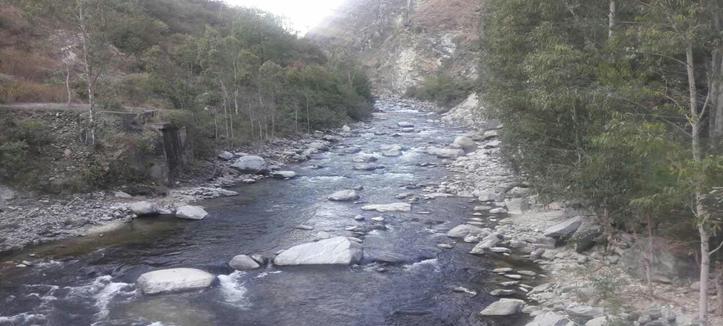Dorji Lhamo
Although golden mahseer is native to Bhutan, it is least studied and its population is declining due to habitat destruction and over fishing, so this project will educate local people on its importance and conservation benefits. The project will also assess habitat status, their distribution and threats associated to this species.

Study Area (Sherichu River).
Golden Mahseer is native to Bhutan and found in most of the fresh water rivers. However, this largest fresh water fish, despite being a popular game fish is least studied in the country as well in the region. Reports indicate that its population is rapidly declining due to habitat destruction and over fishing. The constructions of dams in major rivers of Bhutan are expected to expedite the decline of this mega fish population. However, there are ample opportunities for Bhutan to protect this fish species. Sherichu River is one of the potential sites that are not projected for hydropower project development and it forms a major tributary to Drangmechhu River. Golden Mahseer is found breeding at the confluence of Sherichu and Drangmechhu. There is a big opportunity to establish scientific evidences that will potentially discourage government to plan hydropower project in this entire river basins. For this there is urgent need to educate local communities that are dependent on the river for various reasons. The propose project will assess habitat status, their distribution and threats associated to this species.
As this fish species is least studied and information are limited, the major contribution from this study will be documentation of scientific information. The information generated from this study will be useful for the government to plan hydropower projects in the near future.
The IUCN Red List assessment report in 2010 indicates that the Golden Mahseer are found in restricted area of occupancy. This makes them highly habitat specialist and vulnerable to threats – both natural and anthropogenic. In Bhutan, this species is found in fresh water rivers with moderate gradient. Listed as Endangered species in IUCN Red List, the population of this fish is found declining due to overfishing, loss of habitat, decline in habitat quality and other anthropogenic threats such as leakage of pesticides from agriculture field, construction of hydropower dams and surface collection of sand and boulders.
The data collection will involve two field methods: Direct observation of fish movement and counting in the study areas; and questionnaire survey of local communities living in adjoining areas. While the direct observation will be conducted during the breeding season (April and May), the questionnaire survey and awareness program will take place within first six months of the project.
The result of this research will serve as evidence based information for decision maker and also as baseline information for future researchers to carry out further research. The baseline data is very important in conservation, so the data generated will be of great help in future to find the change in distribution and habitat use due to anthropogenic activities.
Overall, the results of this research will serve as initial scientific documents to plan conservation strategy on Golden Mahseer in Sherichu River.